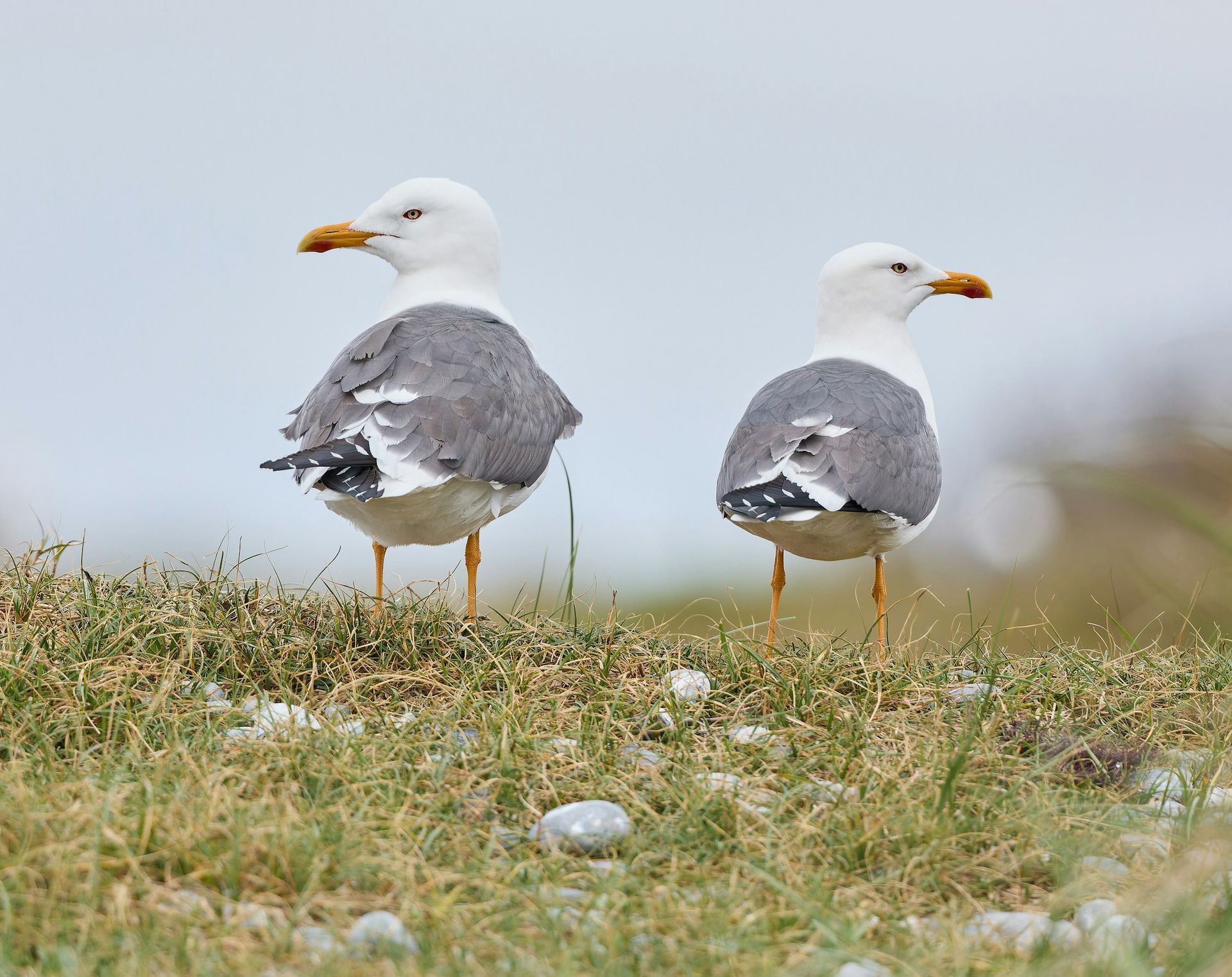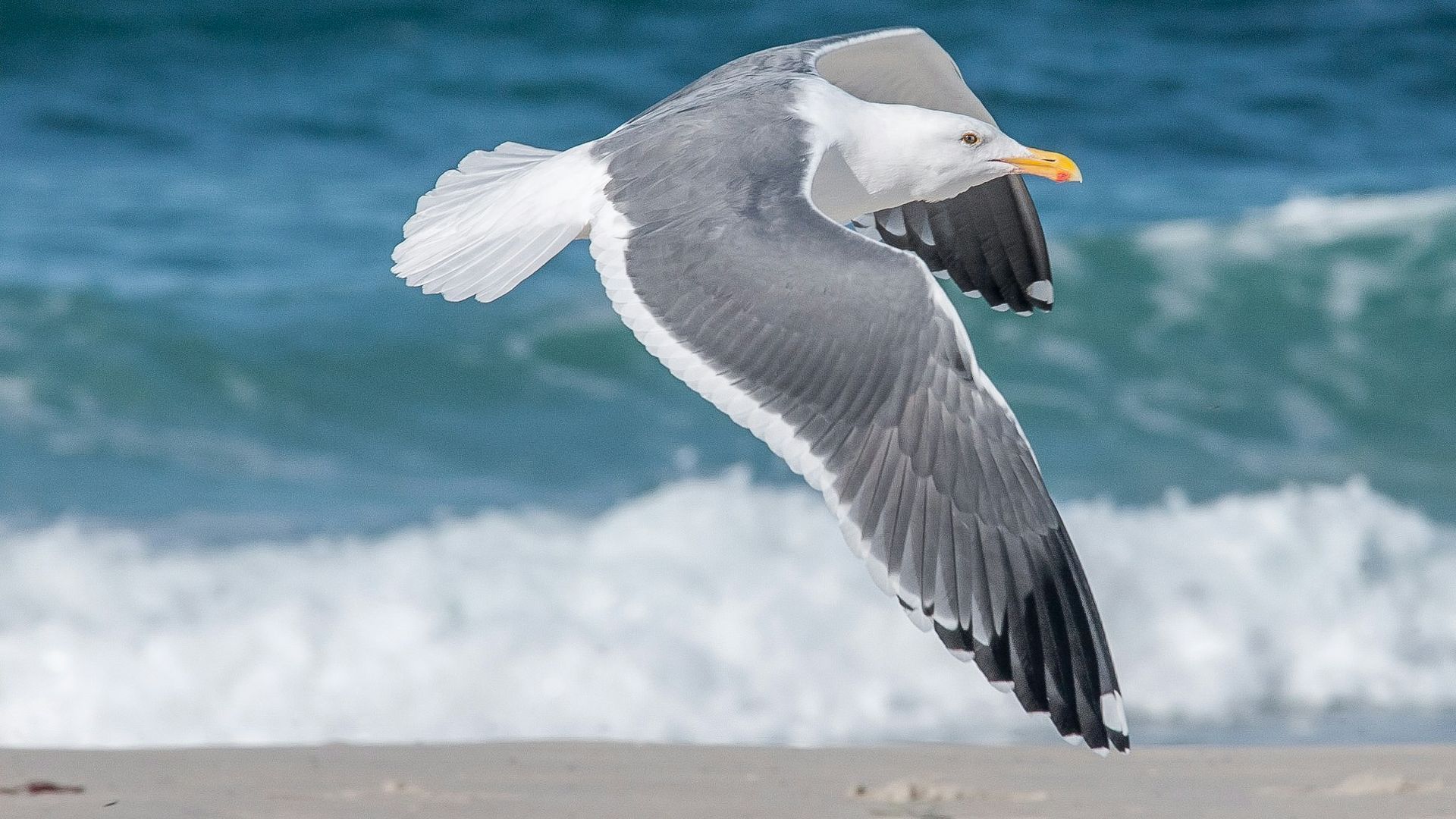Gulls are highly adaptable seabirds known for their opportunistic feeding habits and strong association with coastal environments. Found on every continent, gulls thrive in a variety of habitats, including beaches, lakes, rivers, and urban areas. They play an important ecological role as scavengers, helping to keep ecosystems clean by consuming carrion and waste.
Most gulls range in size from 11 to 30 inches in length, with a wingspan of 35 to 60 inches. Their plumage is typically a mix of white, gray, and black, with some species featuring distinctive markings on their heads or wings. Common species in North America include the Western Gull, California Gull, and Ring-billed Gull.
Gulls are opportunistic feeders, consuming fish, insects, small mammals, and human food scraps. They are highly social and often nest in large colonies, building nests on the ground or rocky cliffs. Both parents share in raising the chicks, which fledge after about six weeks.
Natural predators of gulls include raptors, foxes, and raccoons, but human activities such as pollution, habitat loss, and entanglement in fishing gear pose significant threats. Despite these challenges, many gull species have successfully adapted to urban environments.

For your safety and the well-being of wildlife, please observe animals from a distance and avoid touching or disturbing them. If you encounter an animal that appears injured or in distress, contact a licensed wildlife rescue organization for guidance before intervening.
Found An Animal? Not sure how to help a wild animal in need? Learn when to step in, who to call, and how to help safely.
Did You Know?
- Gulls are one of the few bird species that can drink both fresh and saltwater, thanks to special glands that remove excess salt.
- Heermann’s gulls are notorious for stealing fish from other birds. Sometimes, a group of them will gang up on one pelican until it drops the fresh catch in its pouch!
- Gulls have been around for 70-80 million years, making them one of the world’s oldest surviving bird species.
- Gulls are known to drop hard-shelled prey, like clams and mussels, onto rocks to crack them open.
- Some gulls engage in kleptoparasitism, stealing food from other birds or animals.
- Unlike many birds, gulls can recognize individual humans and remember past interactions.
- Western Gulls have a complex courtship ritual that involves offering small objects like pebbles or fish to prospective mates.
- Juvenile gulls take several years to develop their full adult plumage, passing through multiple stages of feather coloration.
- Gulls are highly vocal and use a wide range of calls to communicate, from alarms and contact calls to begging calls from chicks.
Problems Faced In The Wild
- Pollution: Plastic waste and chemical contaminants harm gulls and reduce prey availability.
- Fishing Gear Entanglement: Discarded fishing lines and nets pose serious risks.
- Habitat Loss: Coastal development reduces nesting and feeding areas.
- Human Disturbance: Recreational activities can disrupt nesting gulls and cause stress.
- Climate Change: Rising sea levels and altered weather patterns affect food availability and breeding success.
- Predation: Eggs and chicks are vulnerable to predators such as foxes and raccoons.
Tips For Cohabitation
- Properly Dispose of Waste: Reduce plastic pollution and secure garbage to prevent scavenging.
- Respect Nesting Sites: Avoid disturbing gull colonies during the breeding season.
- Dispose of Fishing Gear Responsibly: Keep fishing areas clean to prevent entanglement.
- Provide Clean Water Sources: Support local efforts to maintain healthy waterways.
- Educate the Community: Share the ecological importance of gulls as natural recyclers and pest controllers.
- Limit Feeding Wildlife: Avoid feeding gulls human food, which can disrupt their natural diet.



